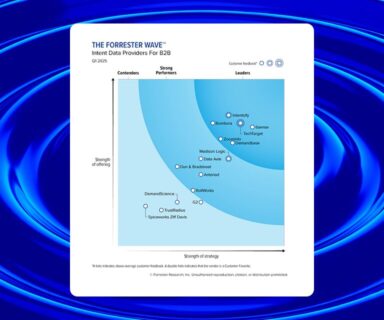 Have you ever heard the saying “this house may need work but it has good bones?” Well, like houses, a lot of content has good bones… but some of it could use a facelift here and thereto be most effective in marketing programs.
Have you ever heard the saying “this house may need work but it has good bones?” Well, like houses, a lot of content has good bones… but some of it could use a facelift here and thereto be most effective in marketing programs.
In recent months, I’ve done my fair share of content audits to help TechTarget clients identify where there are gaps in their content’s messaging and alignment; and what they can improve upon from an overall “best practices” perspective. Across the board, there were common themes in the content audits from client to client, white paper to white paper, video to video. In each audit, I reviewed seven aspects of the content, including: authorship, format, length, buy cycle stage, overall messaging, call(s) to action, and age.
As a marketer (or rather, your company’s content architect, builder, contractor, designer, etc.), you’re tasked with producing and dispersing assets that make prospective customers interested and engaged. Your goal is to make buyers more likely to take another action, whether it be downloading another content piece, visiting your website, or contacting sales. By paying attention to the seven aspects listed here, you can help to ensure that your content is created and executed to meet your objectives. Let me break it down for you:
Authorship
Building a house is (normally) a multi-person job—from the architect to the builder to the painter, it takes various parties to create the final product. Similarly, a good content mix calls for various contributors. With 64% of researchers leveraging third party and vendor-authored content, you want to be sure that those at your organization do not solely author your company’s content. Third-party content—such as expert- and/or analyst-prepared pieces—allow for researchers to get a more subjective view and opinion of your organization/service/solution. Your aim should be to have a least one-third of third-party-authored pieces in the mix.
Format
Cement, wood, marble, glass—it takes all types of material for that house to come together and the same holds true for effective content marketing. 77% of researchers prefer different content at different stages of the purchasing cycle. If you’re only creating and putting out white paper after white paper, that’s a huge missed opportunity. Researchers like variety and have personal preferences in how they like to consume information. Be sure to mix up formats—from infographics, to white papers, to videos and case studies—to ensure that your audience has options with how to engage and consume.
Length
Build a house too small and you’re left wanting and needing more space. Build a house too large and you may feel overwhelmed. The same goes for the length of an asset—and I’m mainly speaking to the problem of content being too lengthy. If a white paper is longer than six (6) pages, or a webinar is longer than 30 minutes, expect to have your audience drop off after that threshold. Content should be concise. Remember, we live in a Twitter-centric world where you’ve got 140 characters to share something compelling. Rather than publish a single lengthy piece, break it into a few focused vignettes.
Buy cycle stage
A house isn’t complete unless it has a floor, walls, and roof. An effective content strategy encompasses a mix of early- (floor), middle- (walls), and late-stage (roof) content aligned with the awareness, consideration and decision stages of the buy cycle. Without content that spans all three stages, your overall messaging runs the risk of missing out on individuals who may be at various points in their research and prevents prospective buyers from effectively nurturing themselves through the funnel via your content. So what’s an ideal breakout? Aim to have 40% of your content be awareness stage (e.g., infographics, videos, white papers, etc.); 35% consideration stage (e.g., vendor comparison pieces, webinars, white papers, etc.); and 25% decision stage (e.g., case studies, demos, ROI calculators, etc.).
Messaging
One may argue that this aspect of the content is the most important. And I’d have to agree; your content’s message is the house in this analogy. So what about the messaging is important? Well… pretty much everything. But, put simply, the message needs to resonate with the audience. The content needs to speak to key buyer pain points; either challenge the “status quo” or demonstrate the point you’re trying to make; and educate the consumer. Learn what your audience cares about and frame your content’s message accordingly.
Call(s) to action
We put a doorbell next to the front door for a reason. It’s a way for visitors to signal us. Well, the same type of directional indicator is helpful for researchers when consuming your content. Instruct them on next steps. Provide them with a path of action that leads them further and further through your content funnel. Now, remember my caution regarding length so as not to lose a researcher’s attention? Well, that pretty much means that those calls to action (if they are present) are most likely not being seen if they’re on say, page 8 of a white paper. With only 40% of researchers consuming an entire asset, you want to be sure that not only are the key points delivered early on, but that the call to action is just as early on! And, although your organization’s contact information is always good to provide, calls to action that inspire actual action are going to be even more beneficial. So rather than a “contact us for more information” call to action at the end of your content, be more prescriptive with something like “download ‘xyz’ case study next to see how a top-10 financial institution reduced costs and improved security with our solution.”
Age
Nothing lasts forever; however, some things last longer than others given the right attention and care. Content that is “evergreen” and relevant will most likely perform well for the long haul. However, content can become fatigued and bits and pieces of that evergreen content may need little updates here and there. Think of it like the paint on a house. Sure, the color lasts for a while, but from time to time, chips need to be fixed. And, sometimes, it’s better to just re-paint the whole thing. From a best practices standpoint, it’s important to keep your content fresh and be sure to update (or retire) those pieces that are 12 to 18 months old.
When auditing your content, evaluate it against these seven aspects and keep some of these best practices in mind. A little curb appeal can go a long way!
I’d love to hear how you are addressing your content mix. Feel free to leave a comment or connect with me on LinkedIn.
Content Mix Curb Appeal Image via Shutterstock




